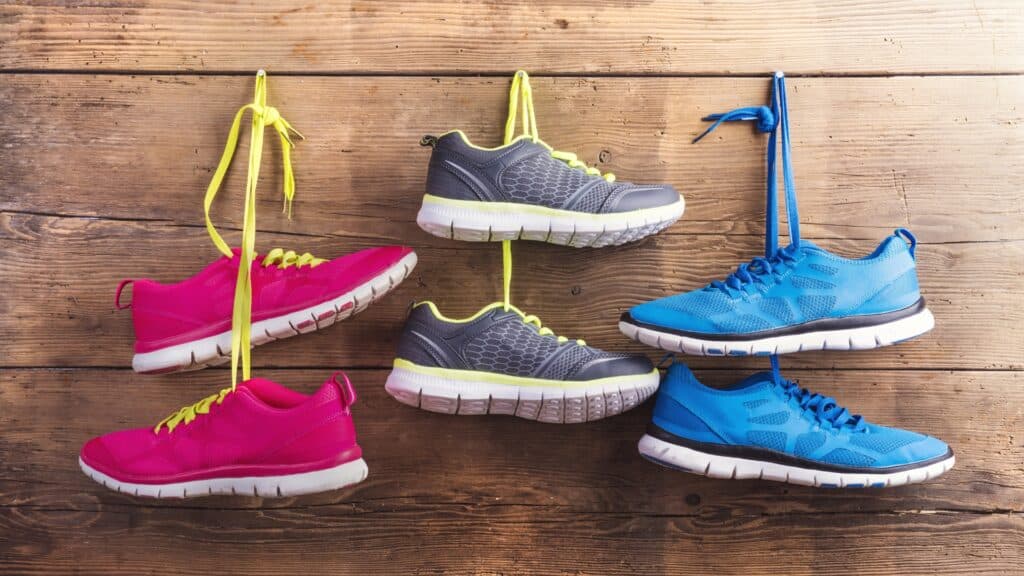Are you considering switching to lower drop running shoes for your road runs? Maybe you’ve already started experimenting with a forefoot strike and shorter steps and need some advice on transitioning smoothly.
In this article, we’ll explore the benefits of a gradual transition, the potential risks of altering your natural running stride too quickly, and practical steps to make the switch without breaking the bank.

Why Transition Gradually?
It’s crucial to approach the transition to lower-drop shoes with caution. Abrupt changes in footwear or running mechanics can increase the risk of injury rather than improve performance.
Research suggests that your body’s natural running mechanics are finely tuned to optimize efficiency and reduce strain.
Attempting to override these mechanics without proper adaptation can lead to discomfort and potential injury.
Understanding Your Natural Stride
Your body’s unique biomechanics play a significant role in determining your optimal running form. Experienced runners often naturally transition towards a forefoot strike, especially during speed and hill workouts.
This transition occurs gradually as the body adapts to the demands placed upon it. Attempting to force a change in stride without allowing for this natural adaptation process can lead to inefficiency and discomfort.

Selecting The Right Shoes
When transitioning to lower-drop shoes, it’s essential to choose footwear that aligns with your running preferences and biomechanics.
Several brands offer options with varying heel-to-toe differentials, allowing you to find the perfect fit for your needs. If you’re currently running in shoes with a higher drop, consider gradually decreasing the drop with each shoe replacement cycle.
Start with a slightly lower drop and gradually progress towards more minimalist options if desired.
Practical Transition Steps
Assess Your Current Running Style: Take note of your current running mechanics, including foot strike pattern and stride length. Understanding your baseline will help you gauge progress and identify areas for improvement.
Gradual Adjustment: Begin by incorporating shorter runs with your lower drop shoes into your training routine. Start with one or two runs per week and gradually increase the frequency as your body adapts. Pay close attention to any discomfort or signs of strain, and adjust your training accordingly.
Listen to Your Body: Your body will provide valuable feedback throughout the transition process. If you experience persistent discomfort or pain, dial back the intensity or duration of your runs and consider seeking advice from a qualified professional.
Strength and Mobility Work: Supplement your transition with targeted strength and mobility exercises to improve stability and reduce the risk of injury. Focus on strengthening key muscle groups, such as the calves and feet, to support your new running mechanics.
Making sure you do the correct strength training is important. The good news is we’ve created a free strength training plan for runners that you can download by clicking here.
Patience and Persistence: Transitioning to lower drop shoes is a gradual process that requires patience and persistence. Be prepared for some initial discomfort as your body adjusts to the new footwear, but trust the process and allow sufficient time for adaptation.

To further enhance your transition to lower drop running shoes, consider incorporating some additional steps into your training regimen:
1. Foot Strengthening Exercises:
Strengthening the muscles in your feet can improve stability and support as you adjust to lower drop shoes. Simple exercises like toe scrunches, calf raises, and towel pickups can help build strength and flexibility in the muscles and tendons of your feet.
2. Gait Analysis:
Schedule a gait analysis with a knowledgeable professional to gain insights into your running mechanics and identify any areas of weakness or imbalance. This can help tailor your transition plan to address specific needs and reduce the risk of injury.
3. Cross-Training:
Incorporating cross-training activities like cycling, swimming, or yoga into your routine can provide valuable variety while giving your body a break from the repetitive impact of running. This can help prevent overuse injuries and improve overall fitness.
4. Listen to Your Body:
Pay close attention to how your body responds to the transition process. If you experience any persistent discomfort or pain, don’t hesitate to take a step back and reassess your approach. It’s essential to prioritize your long-term health and well-being over short-term performance gains.
5. Consult with Experts:
If you’re unsure about any aspect of your transition to lower-drop shoes, don’t hesitate to seek advice from knowledgeable experts, such as running coaches, physical therapists, or podiatrists. They can provide personalized guidance based on your individual needs and help ensure a smooth and successful transition.
Transitioning to lower-drop running shoes can be a rewarding journey, but it’s essential to approach it with caution and patience. By understanding your body’s natural stride, selecting the right footwear, and implementing a gradual transition plan, you can minimize the risk of injury and enjoy the benefits of a more efficient running style. So lace up those shoes, hit the road, and embrace the journey towards smoother, more enjoyable runs.



Comments are closed.